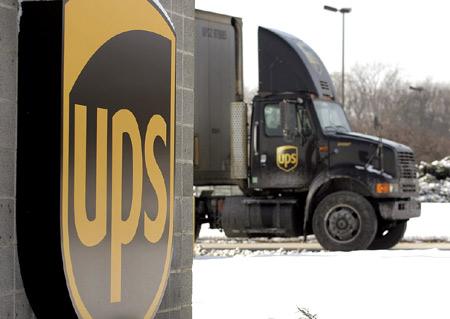
With the official opening of its Asia-Pacific hub, UPS is the only logistics and supply chain solutions provider with two hubs in China.[Agencies]
UPS launched its inaugural flight at Shenzhen's Bao'an International Airport yesterday, marking the opening of its new intra-Asia hub, replacing operations at the former Clark Air Force Base in the Philippines.The new UPS Asia-Pacific hub cost an estimated $180 million and its 400 staff will be capable of sorting 18,000 packages an hour, according to UPS. The hub will provide overnight delivery services between Asia-Pacific countries. China, Japan and South Korea now account for more than half of the company's total intra-Asia volume.
"The inauguration of our flights in Shenzhen is part of our continued effort to help our customers execute trade in the region more efficiently," said Derek Woodward, president of UPS Asia-Pacific.
He added that existing operations at Clark would be refocused to serve as the main import and export gateway for the Philippines. He did not offer job loss estimates for the Clark base.
On Feb 8, UPS announced a better-than-expected performance in the fourth quarter of 2009, due to the strong performance of its international segment. In the Asia-Pacific region, export volume grew 10 percent in the fourth quarter compared with the same period in 2008.
"During the fourth quarter, we saw a noticeable increase in our overall flow of goods," said Richard Loi, head of the firm's China division and senior vice-president of UPS Asia-Pacific region.
According to Loi, China-to-Europe volume grew by more than 15 percent, while intra-Asia volumes increased by more than 5 percent.
"Of course the Chinese market has always been a top priority for UPS and with the official opening of our Asia-Pacific hub we are the only logistics and supply chain solutions provider with two hubs in China. We plan to continue extending the roots we have put down in China as part of our commitment to providing services to the Chinese market," he said.
Intra-Asia trade will grow at an average rate of 12.2 percent annually through 2020, versus Asia's trade with the US, which is projected to grow 7.3 percent annually over the same period, a TIME report said.
UPS is not alone in extending its multi-hub strategy and accelerating infrastructure investments in China.
In February 2009, FedEx opened a $150-million Asia-Pacific hub in Guangzhou's Baiyun International Airport. Its main Asian hub was also previously based in the Philippines.
Prior to that, UPS opened an international air hub in Shanghai in December 2008 with a total investment of $125 million.
DHL has also announced plans to spend $175 million to build its north Asian hub in Shanghai, with the facility to be completed in the second half of 2010.
"That proves China has become one of the most promising countries in their global plan," said Sun Feifei, an analyst at Guosen Securities.
"All international delivery players hope to seize the opportunity in this market ... but their less developed domestic network in China compared with Chinese counterparts may restrict their performance ... despite constant investments in these regional transfer centers," Sun said.





